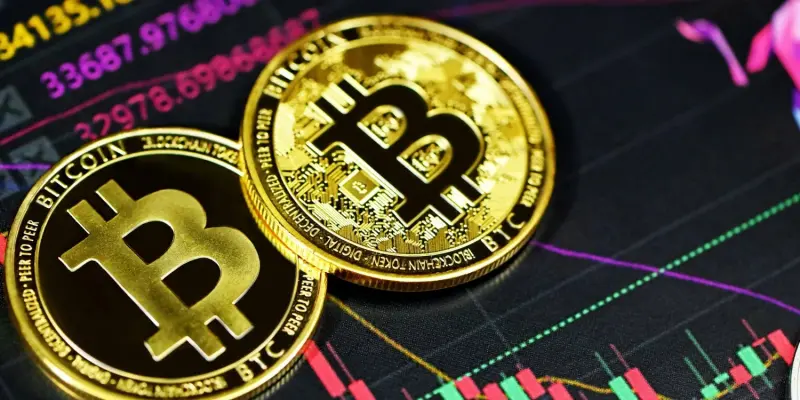In the rapidly evolving cryptocurrency landscape, Bitcoin reigns supreme, experiencing both a decline in price and a surge in market dominance, which now stands at a notable 64.7%. This situation unfolds amidst geopolitical tensions, with altcoins like Ethereum, XRP, Dogecoin, and Cardano witnessing significant price fluctuations. Drops ranging from 5% to 10% reflect the broader impact on the cryptocurrency market. As analysts dissect these dynamics, the spotlight is on whether a new altcoin season akin to previous high points can emerge. Experts debate the factors necessary for such an event, suggesting that robust utility is the key to driving this anticipated rally rather than mere speculation. The management of risk and the evaluation of historical market patterns will ultimately guide stakeholders in their efforts to navigate these uncertainties.
The Economic Landscape
Bitcoin’s Market Position
Despite recent challenges, Bitcoin’s command over the market persists, illustrating its resilience and unique position among cryptocurrencies. Analysts note the contrast between its growing dominance and the simultaneous dip in price, pointing to geopolitical turmoil as a contributing factor. Tensions, including conflicts such as Iran-Israel, have triggered substantial market liquidations exceeding $1 billion. Bitcoin’s ability to maintain its stature amid such conditions reinforces perceptions of its utility as a digital asset, often considered a hedge against economic instability. While traditional markets grapple with fluctuating economies, Bitcoin remains a reference point for stability, even as altcoins suffer larger corrections. Its dominance appears steadfast, reflecting both its foundational technological attributes and evolving investor sentiment that continues to favor its perceived security over emerging alternatives.
The Influence of Geopolitical Factors
Geopolitical issues play a significant role in shaping the trajectory of the cryptocurrency market, impacting investor behavior and market confidence. The real-time effects of these tensions are reflected in liquidations and the volatility experienced by altcoins. Market observers emphasize that Bitcoin’s relative strength during volatility underscores its established reputation as a stable asset class compared to others. Nevertheless, the altcoin market undergoes harsher corrections than Bitcoin, highlighting the effects of external geopolitical forces. Expectations of future growth for altcoins hinge on creating environments less susceptible to geopolitical disruptions. The hope is that advancements in sectors such as blockchain technology can offer solutions that mitigate the impact of geopolitical unrest, thus providing a firmer foundation for altcoin development.
Potential for Altcoin Season
Speculative Market Dynamics
The concept of a new altcoin season invigorates discussion among traders and analysts, as historical patterns reveal both promise and pitfalls. Drawing parallels to previous market cycles, analysts suggest potential triggers for altcoins might reside in tangible utility rather than speculative fervor. Merlijn The Trader points to past occurrences, such as 2021’s double fakeout scenario, which initially misled expectations. He asserts that any upcoming rally for altcoins will likely stem from substantial, demonstrable utility. Understanding market dynamics that transcend speculation is critical for investors. Emphasis on developing applications that offer real-world solutions and enhancements to current systems may foster growth opportunities. Investors are guided to conduct thorough research into altcoin projects, focusing on those with technological advancements and strategic partnerships that could catalyze progress in the cryptocurrency sector.
Challenges in the Altcoin Ecosystem
Challenges within the altcoin environment revolve around achieving sustainable growth amid fluctuating ratios and uncertain market conditions. Benjamin Cowen highlights the declining ALT/BTC ratio, currently shifting from a previous position of 0.34 to 0.32, suggesting a further decrease to 0.25. This trend indicates formidable obstacles for altcoins facing competition from Bitcoin’s entrenched dominance and market preferences. Historical evidence presents a picture where only select altcoins manage to achieve enduring success across varying market cycles. The need for altcoins to build robust foundations through continuing innovation and effective adoption is paramount. Engaging with stakeholders that drive ecosystem development forms part of strategic plans aimed at countering adversities. As technical challenges emerge, constructive dialogue and collaboration may offer pathways to navigate these hurdles, fostering resilience within the altcoin community.
Conclusion: Navigating Future Market Trends
In light of existing conditions, the cryptocurrency sector presents uncertainties and opportunities requiring prudent navigation. The complex interplay of macroeconomic factors and market volatility demands careful consideration by all participants. While the dialogue concerning an altcoin resurgence retains prominence, the strength of Bitcoin’s current dominance remains unlikely to shift without a substantial catalyst, signaling caution for aspiring investors. Emerging technologies and dynamic collaboration may pave the way for new advancements, yet significant catalysts are crucial to promote widespread altcoin growth. Future strategies should address these challenges, drawing insights from past cycles to inform decision-making processes. As developments continue, transitioning from speculative interest to the pursuit of lasting advancements will likely redefine future trajectories and secure balanced progression in the cryptocurrency space.

